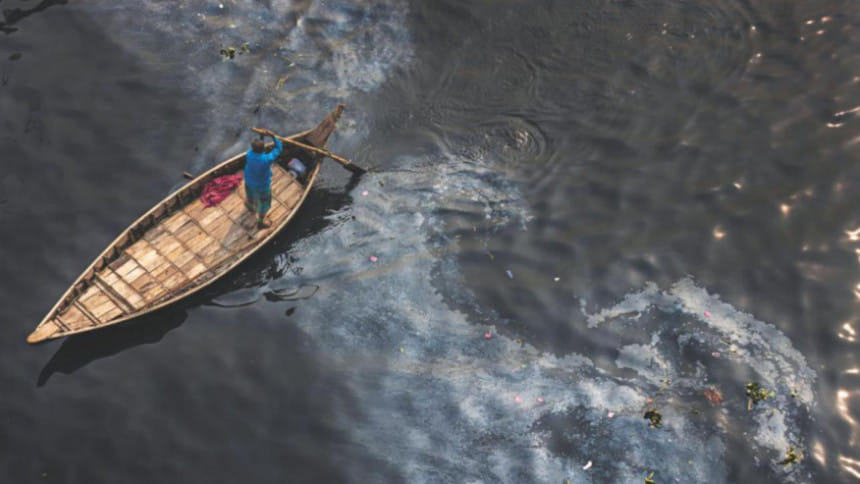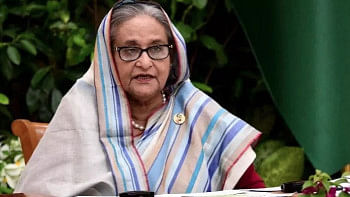How our rivers fared in 2019

The year 2019 saw both good and bad developments for our rivers. On the good side, the first thing to be mentioned is the High Court's judgement of February 3, declaring rivers as a "legal entity," having rights similar to a living person. The High Court appointed the National River Protection Commission as the guardian of rivers and assigned it the responsibility of upholding the rights granted to rivers. In delivering this judgement, the High Court was following precedents of granting similar rights to nature as a whole (by countries like Ecuador and Bolivia) and to particular rivers (such as by New Zealand). Even a court in India granted personhood to the Ganges and Jamuna rivers in 2017.
The second good development regarding rivers in 2019 is the new energy that the government displayed in freeing rivers from encroachment. Many structures have been demolished from the banks of the Buriganga and Turag rivers. There has been some progress in this respect in some districts too. For example, the Habiganj district administration displayed notable enthusiasm for recovering the Old Khoai River by demolishing the encroaching structures.
The third good development regarding rivers in 2019 has been another initiative by the High Court—this time against pollution. The HC observed on December 3 that there are 68 underground drains and sewerage lines under control by Dhaka Wasa, dumping untreated sewage into the Buriganga River. On December 9, it ordered Dhaka Wasa to shut all sewerage lines connected with the Buriganga River within the next six months. In addition, the court asked the Department of Environment to shut down, within the next one month, all industries built on the banks of the Buriganga River without clearance and industries polluting the river by dumping waste. In general, the court ordered the authorities to stop dumping all types of waste to keep the water pollution-free.
These positive developments are of course encouraging. However, there were many disappointing developments regarding rivers in 2019 too. The first set of these developments concerns implementation of policies and directives. As the saying goes, "the proof of the pudding is in the eating." Improper implementation can nullify the intention of good policies and directives and produce opposite results. It may be recalled that, in 2009, the HC, alarmed by encroachment and responding to the demand by river activists, had directed the district administrations to demarcate, by installing pillars, the boundaries of rivers that surround Dhaka city. Unfortunately, the district administrations implemented this directive by setting up the pillars in the middle of the rivers, thus aggravating the problem of encroachment. A writ petition was filed in 2015 asking for remedy, and the HC ruling of 2019 was a response to that petition.
River activists have pointed out that the authorities, even in their current demolition drive, are not following properly the HC directives regarding steps to be followed in demarcating river boundaries. Instead, they seem more interested in clearing the space needed to implement the walkway construction project. As a result, many encroaching structures are getting legitimised.
Furthermore, alongside the demolition drive, a process is going on to convert the old channel of the Buriganga River (called Adi Buriganga) into a lake, modelled after the Hatirjheel project. Needless to say, this project amounts to killing the river, violating the HC's order to treat rivers as a living entity. This ill-advised project will also disconnect the Buriganga River from the Turag River. Likewise, for one good example of Old Khoai recovery, there are hundreds of examples in various districts of converting rivers into a series of small ponds, in contravention of the High Court judgment.
Similarly, it remains to be seen how effective the High Court's directives to stop polluting the Buriganga River will be on various government agencies. Previous government initiatives at controlling river pollution have not been that successful. For example, an effort was made to remove the thick layer of plastic debris that has accumulated on the Buriganga River bed. However, the effort appeared to have been abandoned half-way. Similarly, the shifting of tanneries from Hazaribagh to Savar, according to press reports, has largely shifted the pollution from the Buriganga River to the Bangshi River. In general, the government has not been that successful in making the industrial enterprises build and run effluent treatment facilities properly. Thus, the situation regarding implementation of policies regarding encroachment and pollution continued to be disappointing in 2019.
The second area of discouraging developments in 2019 concern transboundary river issues. The upper riparian countries, in particular, India, continues to divert water away from Bangladesh's rivers. This has created a paradoxical situation. On the one hand, these diversions are causing the average river flow to diminish. In the dry season, the flows often fall below the minimum required to keep the rivers alive. This diminution of flow leads to increased sedimentation, formation of sand bars (chars), encouraging encroachment. The depth and carrying capacity of rivers decreases. When India opens all the barrage gates in the rainy season, the shallow rivers can't carry all the water discharged. The result is widening of rivers and serious bank erosion. Bank erosion in 2019 was particularly tragic in Naria Upazila of Shariatpur district. Thus, diversion by India is aggravating both encroachment and bank erosion.
Cross-boundary river pollution is also getting more serious with time. One reason why the Indian court granted the Ganges and Jamuna rivers personhood is the horrendous pollution that these rivers are suffering from, despite being considered holy. This pollution is entering Bangladesh. Due to upstream denouement, the rivers in Bangladesh now carry more sand and coarse materials than fine silt. As an additional problem, rivers flowing from Meghalaya into the Sylhet division are carrying more chemical pollutants, including heavy metals, due to mining activities conducted there.
Unfortunately, Bangladesh so far has been unable to protect adequately its rights as a lower riparian country. The Ganges Treaty of 1996 has not been able to increase the Padma flow and to ensure the minimum environmental flow in the dry season, due to the absence of any minimum guarantee clause. Any talk about the Teesta River sharing has lost its worth because further upstream diversions have systematically reduced the flow reaching the Gajoldoba Barrage.
Bangladesh's reticence in fighting for its rights on the shared rivers is puzzling in view of the approach it took to resolving the maritime border dispute with India. In October 2009, Bangladesh turned to the United Nations Convention on Law of Sea (UNCLOS) for settlement of this dispute, and in 2014 the Permanent Court of Arbitration provided the verdict largely in favour of Bangladesh. When it comes to rivers, Bangladesh has so far refrained from signing the 1997 UN Convention on Non-navigational Use of International Watercourses, despite the fact that this convention upholds many rights of lower riparian countries. Instead, Bangladesh clings to the bilateral framework, which has done very little for it.
The lesson for 2019 is, therefore, that Bangladesh has to be more energetic both domestically and in its negotiations with India to protect its river system.
Dr Nazrul Islam is Founder, Bangladesh Environment Network (BEN) and Vice President, Bangladesh Poribesh Andolon (BAPA).

 For all latest news, follow The Daily Star's Google News channel.
For all latest news, follow The Daily Star's Google News channel. 



Comments